The SVA community considers a potentially revolutionary technology.
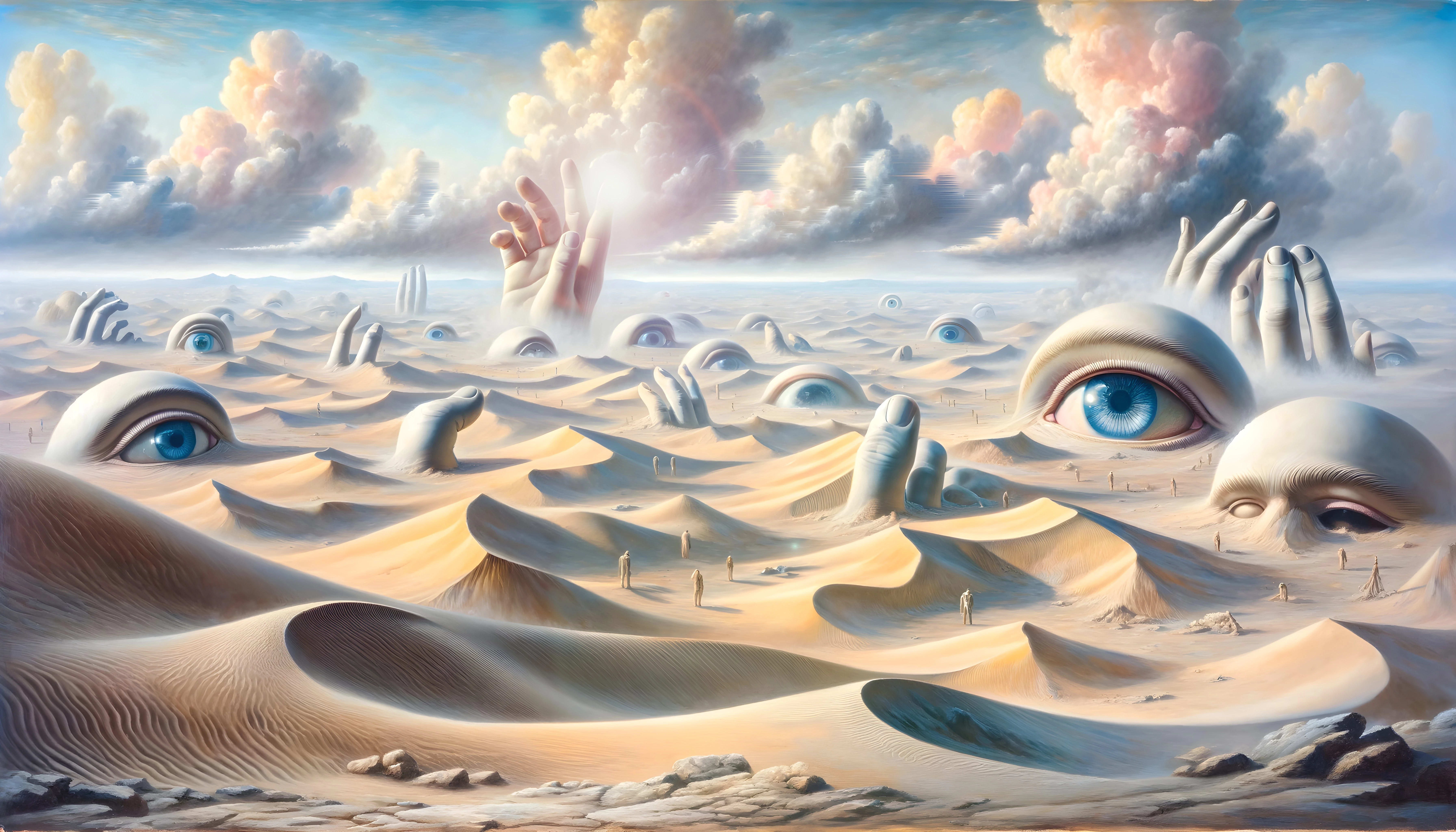
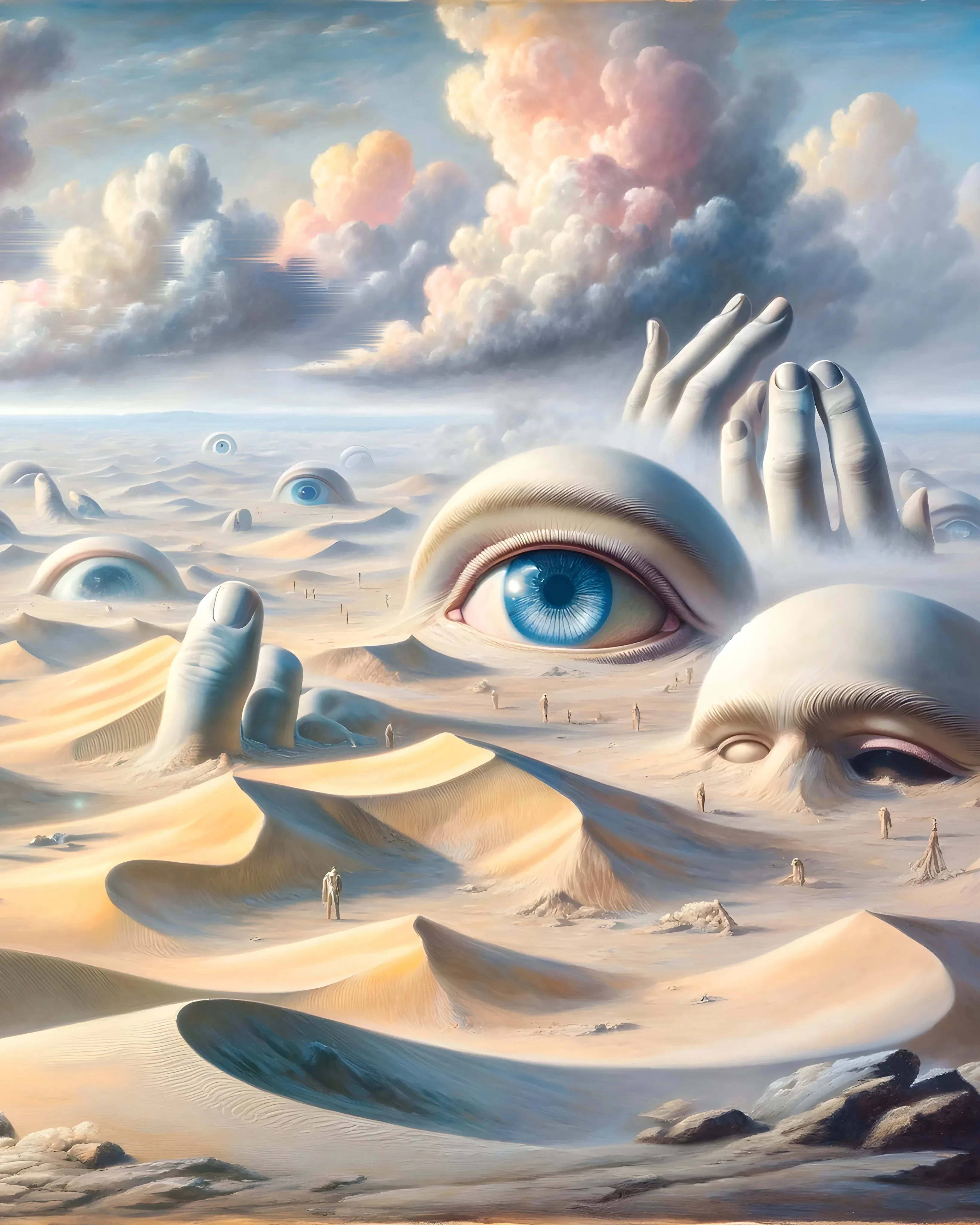
Surreal Desert, which MFA Computer Arts Assistant Director for Innovation Technologies Rochelle Gloor created with Chat GPT. Through striking, the image exhibits some of the lingering shortcomings of generative AI. (Count the fingers on the hands.)
Surreal Desert, which MFA Computer Arts Assistant Director for Innovation Technologies Rochelle Gloor created with Chat GPT. Through striking, the image exhibits some of the lingering shortcomings of generative AI. (Count the fingers on the hands.)
A nearly two-hour-long event at the School of Visual Arts last spring delved into topics like the nature of machine versus learning, creativity in a tech-dominated era, and the very purpose of education itself. Convened by the Office of the Provost and moderated by Molly Heintz (MFA 2011 Design Criticism), chair of MA Design Research, Writing and Criticism, “Crisis or Opportunity: Generative AI and the Education of Artists and Designers” was a veritable town hall about the incursion of a technology in arts education. The conversation turned philosophical and even contentious in parts; it was clear to everyone in attendance that what was on the agenda was a beast that can no longer be ignored.
“Crisis or Opportunity” offered vivid proof of how the emergence of generative AI is affecting artists and designers. Suddenly, creative professionals must face the reality that the means of making images, text, audio, logos, and video is now available to anyone who has access to Midjourney, ChatGPT, Stable Diffusion, DALL-E, and other generative-AI tools. And while these nascent tools are potentially revolutionary for production-heavy fields such as animation or visual effects, they have been seen as threatening to art and design specializations that prize hand-hewn creativity.
Recognizing the multiplicity of concerns, SVA Provost Christopher Cyphers has tasked each department to set its own AI policy as the College as an institution works toward a “statement of philosophy” regarding the use of the technology in its academic programs.
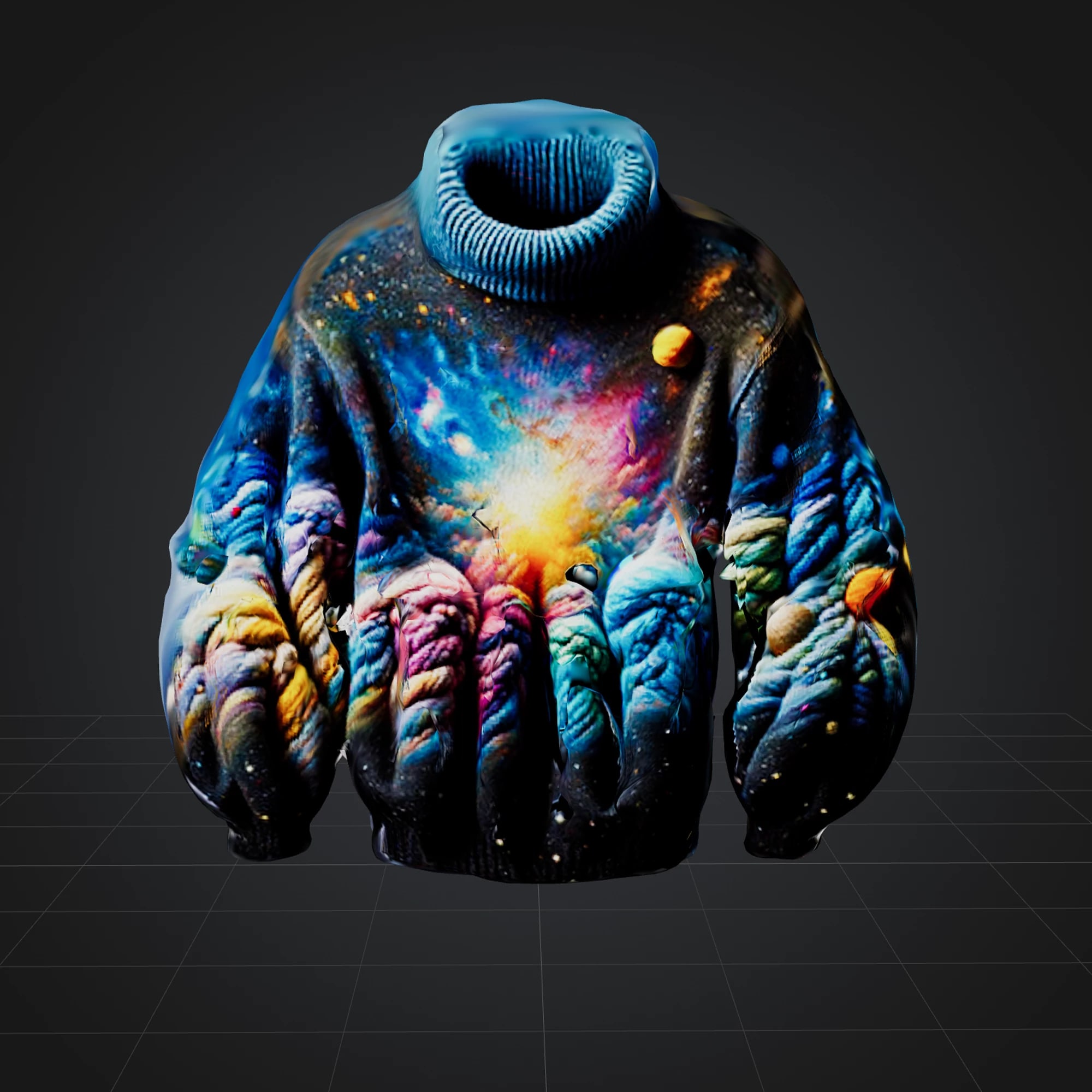
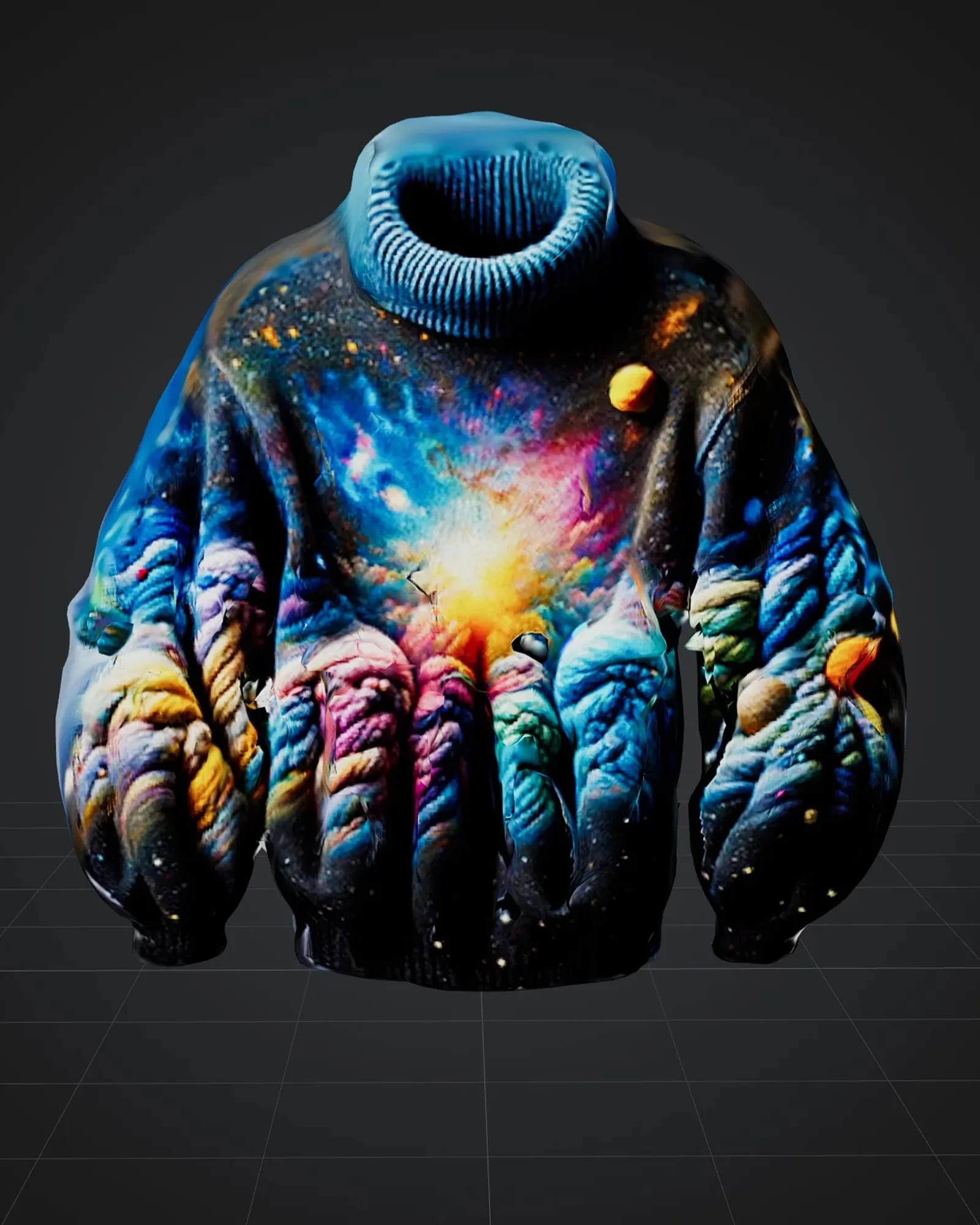


A sweater inspired by the Hubble Telescope’s Pillars of Creation photograph, created by Rochele Gloor with ChatGPT and Meshy.
MAKING SENSE OF AI BY DEPARTMENT
Among SVA’s most ardent proponents of generative AI is Terrence Masson, chair of MFA Computer Arts and a CGI veteran who has worked on blockbusters like the Star Wars films and Titanic. To him, the technology will ultimately have a democratizing effect.
If you weren’t trained as an artist or as a storyteller, it can be incredibly frustrating to express yourself. I think we’re going to get better human stories and different kinds of art.”
So convinced is Masson of AI’s potential that he created a new departmental position to make sense of the deluge of tools and burgeoning technologies. “The goal is to optimize the animation-production pipeline so our students can focus on the storytelling and aesthetic aspects of their projects,” says Rochele Gloor, the assistant director for innovation technologies in MFA Computer Arts. A former member of the University of Illinois at Urbana-Champaign’s widely admired generative-AI research group, Gloor keeps abreast of the latest academic research on the topic while helping establish a new virtual production studio for the program.
MFA Computer Arts is also introducing several new AI-focused courses—including AI and Filmmaking, taught by Academy Award–winning filmmaker Anthony Giacchino—and retooling several others to integrate the technology into the curriculum. Masson says his department’s AI policy is
Allan Chochinov, chair of MFA Products of Design, believes that creating a space where students can wrestle with the thorny issues of technology is the mandate for design schools. “We have to teach this stuff in school because when our students graduate, they’re going to be asked to use these tools without any conversation around copyright or consent or bias at all,” he says.
In thinking about a curriculum for AI education, Chochinov explains that it’s crucial to tailor discussions based on the audience. “For non-designers, these tools can get you to a kind of finished product of design that you can use to hopefully have a fruitful conversation about, instead of talking about things in the abstract. Working with designers, it becomes much more complex.
To this end, each year MFA Products of Design convenes a five-part advanced seminar in AI where students tackle topics like ethics, mechanics, tools, ventures, and experiments.
Chochinov says he expects that the department’s AI policy—which requires approval of use by the course’s instructor, barring its use in final outputs, and disclosure—will evolve as the technology advances and if it becomes more pervasive. For instance, he contends that disclosures may soon become moot, pointing out that AI is already built into widely used software programs offered by Adobe and Microsoft. “To say something like, ‘This was written with the help of AI,’ is going to sound pretty ridiculous in another year.”
Randy Hunt (MFA 2007 Design), who began his tenure as MFA Design chair this past summer, following the retirement of the program’s founding co-chairs Steven Heller and Lita Talarico, says that generative-AI tools can be particularly beneficial to the type of well-rounded professional his department seeks to train.




“Cyborg horse” images created by MFA 2023 Computer Arts alumni Boning Li and and Fanyu Liu with Stable Diffusion.
Hunt, who is the head of design at Notion, an AI-powered productivity startup, and the former vice president of design at Etsy, explains that designers who can bridge several disciplines are in great demand. “Generalists are really powerful and are good to have as part of your practice but it is really difficult to manage that at scale. The few organizations who manage to do it are places where really special stuff happens. It’s one of the attributes of the Apple design team that people may not know about.”
SVA’s MPS Branding program, chaired by Debbie Millman, is taking a measured, ethics-focused approach to AI. Like other departments’ policies regarding students’ use of the technology, prior approval—in this case, from Millman—is required. Any work incorporating AI must be “properly and rigorously attributed” as such, and any deviations “will be considered plagiarism, at which point all SVA school policies will immediately go into effect,” she says.
Millman’s priority, she explains, is on training sensibilities. “The role of AI in branding will be similar to [its role in] other disciplines: it depends on how the people using it use it. Good people will use it for good and bad people will use it for bad. Technology can only be directed by people. It doesn’t self-direct or write its own prompts.”
At this stage, Millman believes, generative AI is most effective as an idea-generation tool. Images and texts created through AI alone are often glitchy, adding extra fingers to hands or citing inaccurate or invented sources as factual.
For the time being, at least, Millman sees little cause for concern over AI-powered platforms like Namelix or 99Designs, which generate logos and branding schemes on demand. “I am not worried even a tiny little bit,” she says. “The work is dreadful. I guess the old adage is true: You get what you pay for.”
“Educational institutions are places for boundaries to be explored and pushed,” says Jimmy Calhoun (BFA 2003 Animation), chair of BFA 3D Animation and Visual Effects. “Today’s young artists get to help find ways to use emerging technologies . . . [but] we all have to protect our own intellectual properties from being scraped by these tools.”
As chair of an undergraduate program in particular, he says, “we have to help students develop their artistic skills and visual thinking. To do this, it’s important that they learn foundational art skills and practices without using an algorithm to generate a part of the final project.
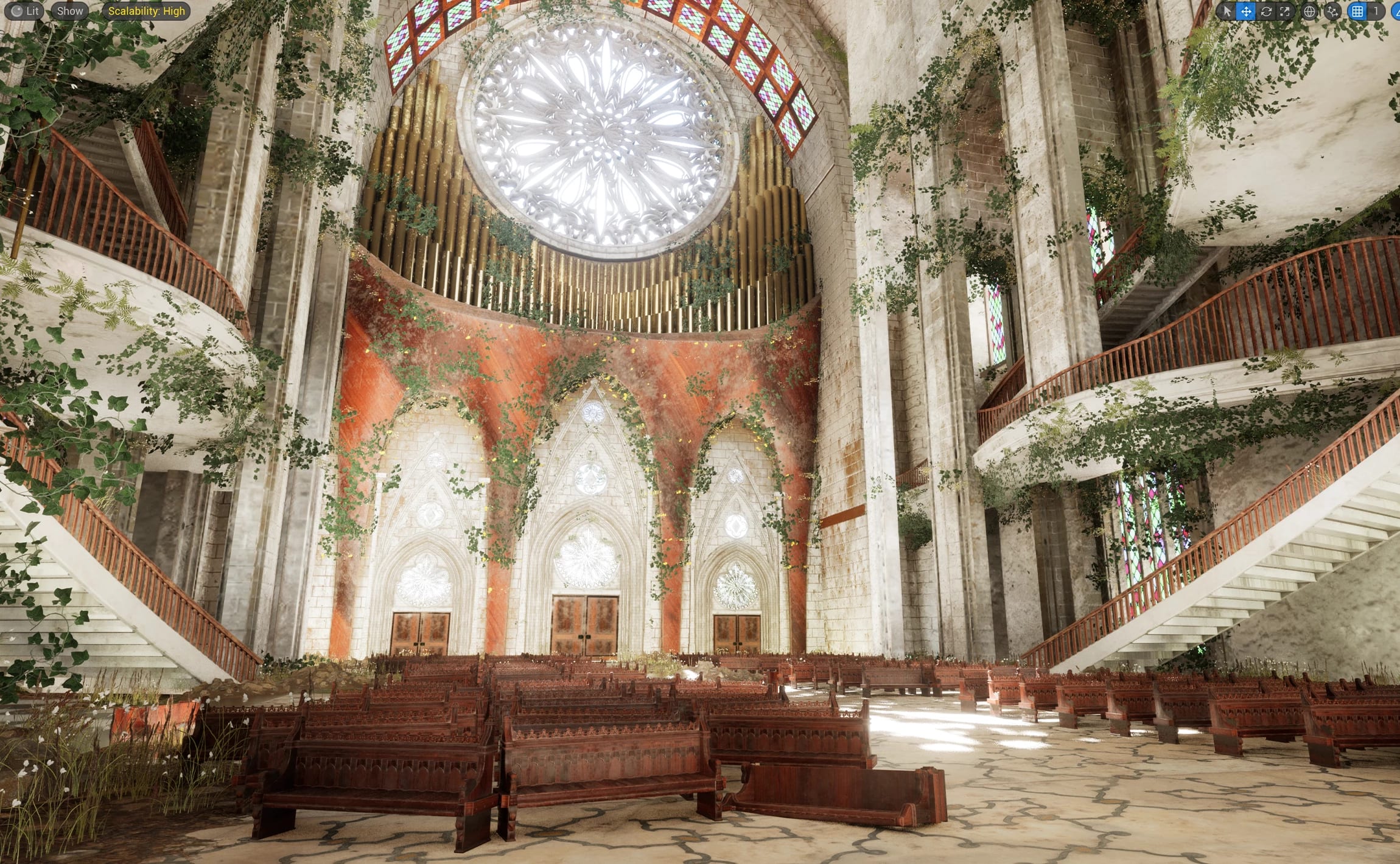

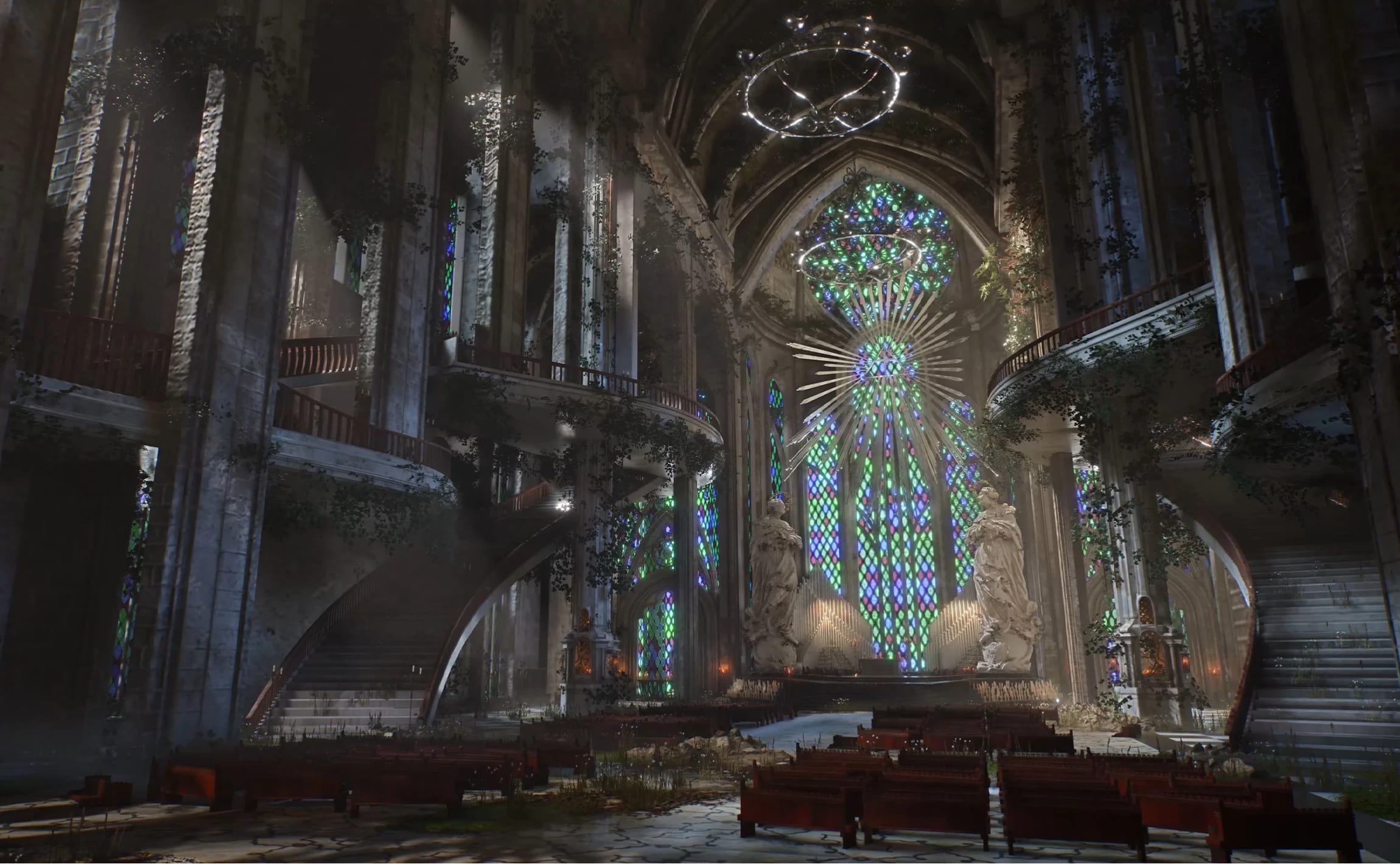
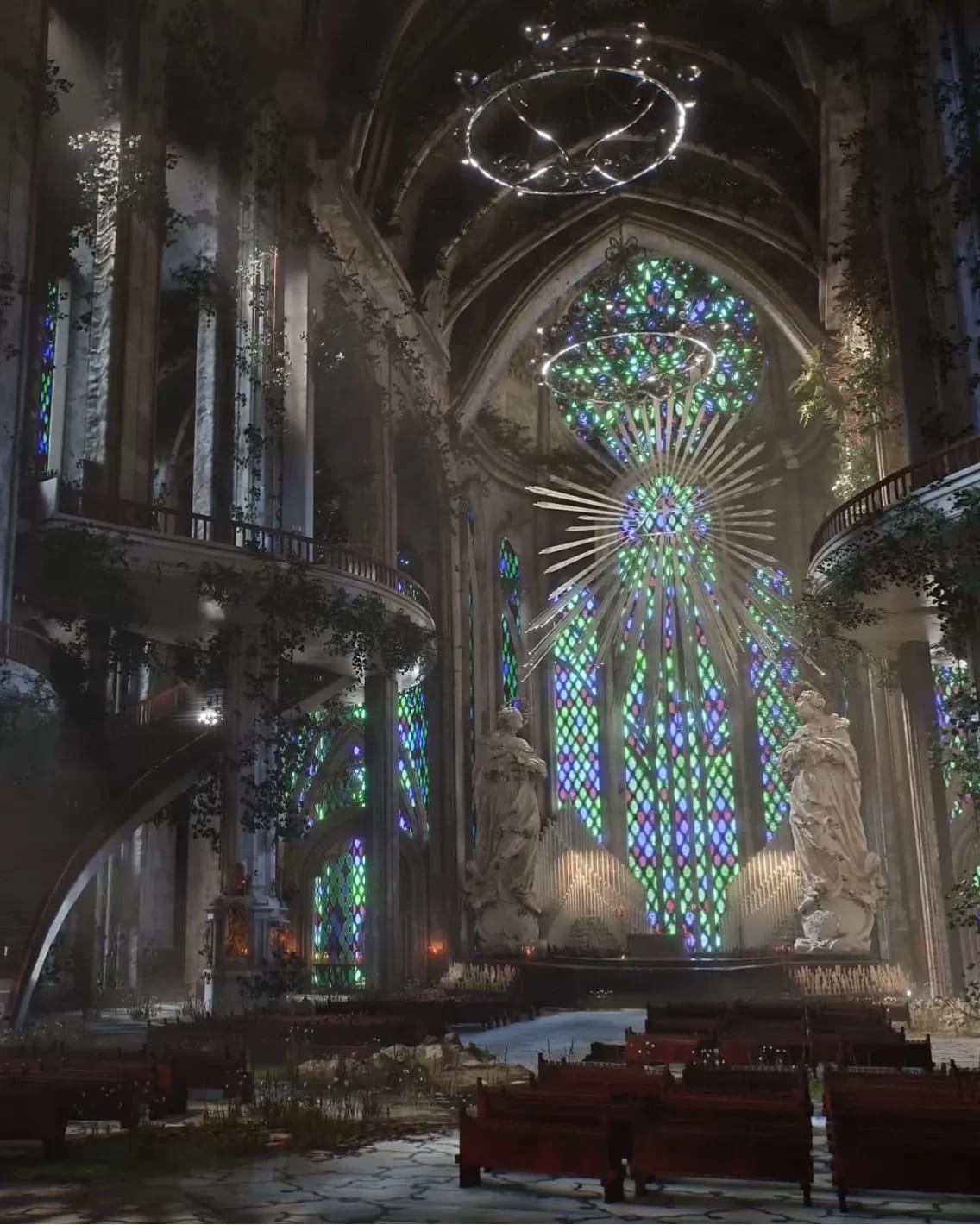

For their thesis film, BFA 2023 Computer Art, Computer Animation, and Visual Effects alumni Mulin Chen, Josh Marquez, and Robert Yu used Midjourney to generate scenes of an abandoned and decaying grand cathedral (bottom row) that were used as reference for creating their own unique imagery through the software program Unreal Engine 5.
Likewise, in BFA Comics and BFA Illustration, both chaired by Viktor Koen (MFA 1992 Illustration as Visual Essay), generative-AI use is restricted to research and reference-making. “Students can experiment with them to create reference materials as long as the final artwork is done by hand,” Koen says. “I think illustration and comics are a little misunderstood as disciplines. Things are a little more intimate; they're a little more human-to-human.”
For Koen, educating illustrators and comic book artists is about nurturing unique voices, which isn’t what machine-learning models offer. “We're being flooded with a lot of sameness,” he says. “This is where the trained artist comes in and takes that tool and pushes it forward in ways that are very different.” But that isn’t to say that the department is turning its back on generative AI.
BEFRIENDING THE BEAST
Of the panelists in “Crisis or Opportunity,” Frank Martinez—a trademark and copyright attorney who teaches in the BFA Design, MFA Design and MFA Interaction Design programs—appeared to be the most enthusiastic and knowledgeable about AI. Studying how algorithms work over the past few years has helped him make sense of its power.
In his classes at SVA, Martinez advocates for openness and experimentation. “If you approach creativity from the perspective of protecting rights, it may, to a certain extent, create an atmosphere of limitations,” he says.
Similarly, photographer and creative director Apeksha Agarwal (MPS 2020 Digital Photography) recently taught herself how to integrate generative AI into her work. (Agarwal’s black-and-white photographs of Mumbai during its COVID lockdown were featured in the fall/winter 2020 Visual Arts Journal.) After losing a job to AI last year, she dedicated months to learning about algorithms and applications.
Agarwal, whose work has been featured in Vogue, Harper’s Bazaar, and exhibitions at Art Basel Miami and New York Fashion Week, has since established herself as a leading proponent of generative-AI photography, which combines traditionally shot studio images with backgrounds, fashions, and other visual elements that are created with the aid of applications like Midjourney, Photoshop AI, and Stable Diffusion.
In weaving AI throughout her workflow—from composing cover letters, creating storyboards, to producing the final artwork—Agarwal attests that the human touch isn’t lost in the fray. “My knowledge as a photographer has a huge role in what I’m creating,” she says. “As an artist, I don’t think I could be replaced. I could’ve been replaced if I didn’t go out and learn about it.”
Apart from her studio practice, she also conducts workshops on generative AI.
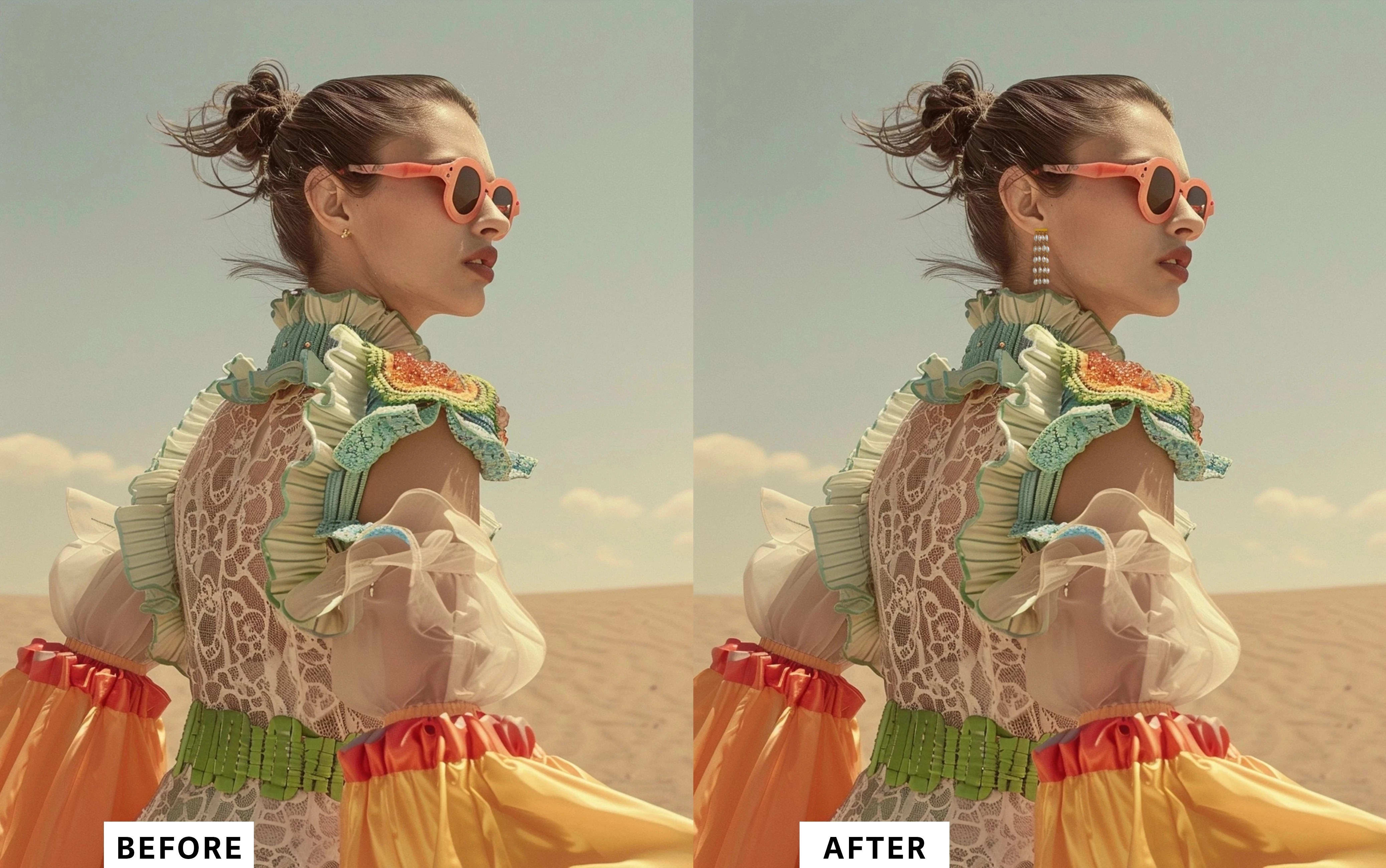

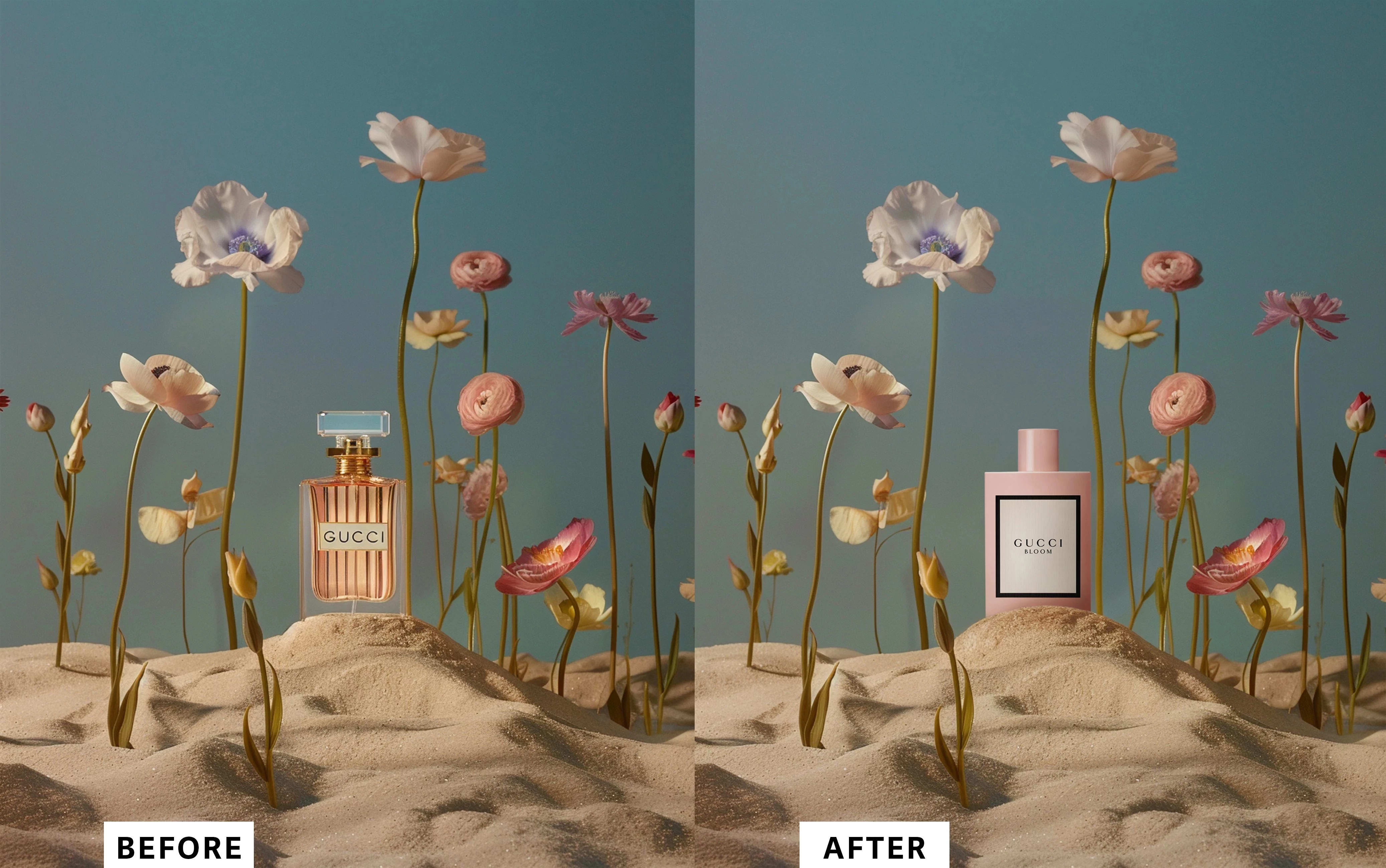
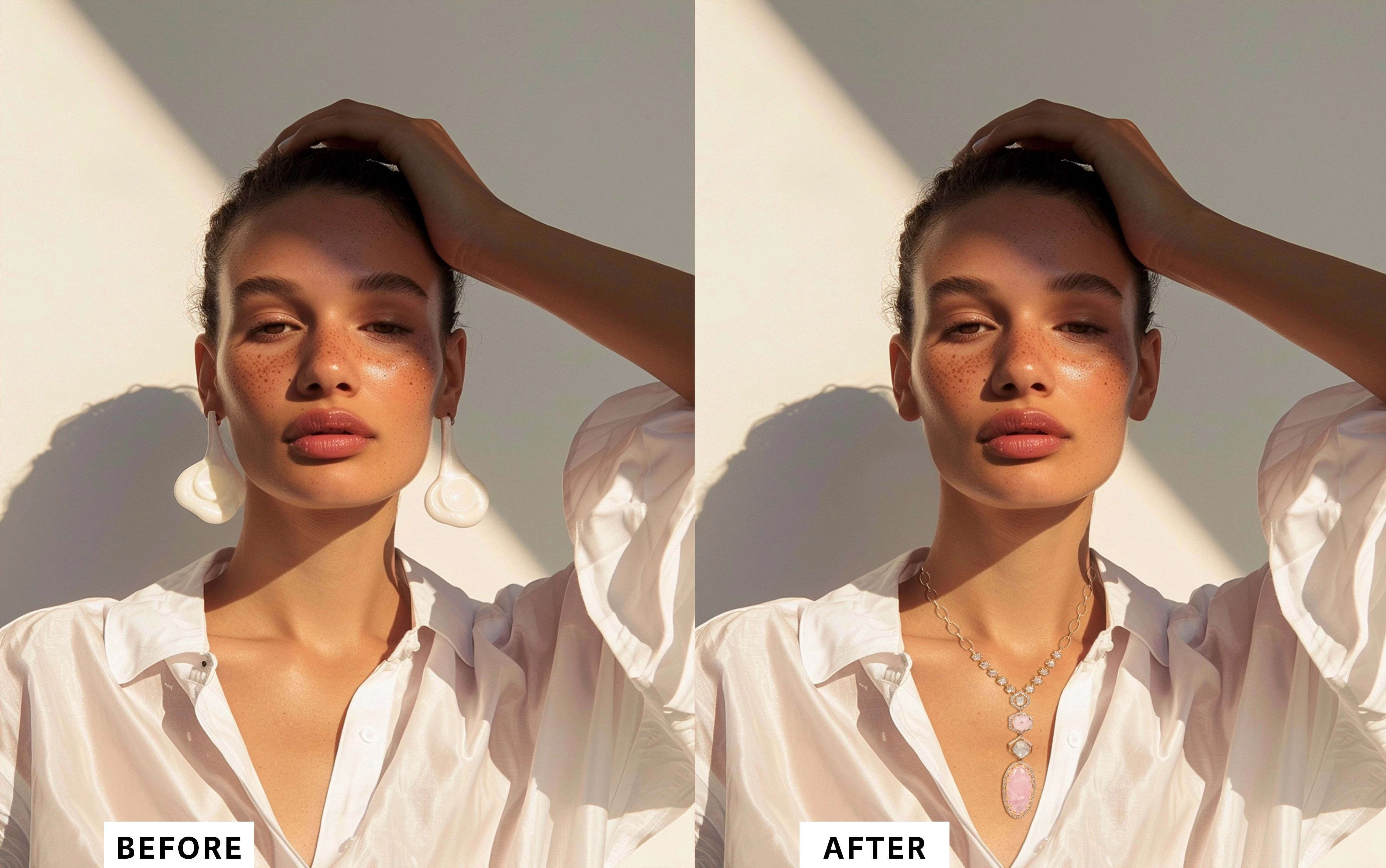
Photographs by Apeksha Agarwal (MPS 2020 Digital Photography altered through generative AI) to swap in different pieces of jewelry and cosmetics.
THE LONG VIEW OF GENERATIVE AI
As generative-AI technology develops, and debates around its true economic and cultural effects continue, perhaps the biggest lesson from its sudden emergence is about perspective.
“The conversations and debates we are all having about AI now remind me of the conversations and debates designers had in the late 1980s about the use of computers in creating design,” Millman says. “Back then, designers were convinced we were doomed—that computers would take all of our jobs and create utterly soulless design. While some jobs were indeed lost, hundreds of thousands of jobs have since been created, and the originality in the work of designers has not diminished.”
Hunt says, citing a range of breakthrough inventions that disrupted entire economies, from sewing machines in the Industrial Revolution to personal computing and the Internet. “There’s a good chance that this period will be a defining moment. I think we’ll behave differently, we will experience things quite differently, but a lot of things like that eventually become oxygen—they become a fundamental truth.”
And, despite all of the hype, some department chairs note that their students, tend to have a more tempered sensibility about generative AI. “The thing that’s really interesting to me is some people just aren’t interested,” Chochinov says. “I had a presumption that everyone would be interested in this. That’s not true, it turns out.”
Anne Quito (MFA 2014 Design Criticism) is a journalist, design critic, and MFA Products of Design faculty member. She wrote Mag Men: Fifty Years of Making Magazines (2019) with Walter Bernard (1961 Graphic Design) and the late Milton Glaser, a longtime SVA faculty member and former acting chairman of the College’s board.
A version of this article appears in the Fall/Winter 2024-25 Visual Arts Journal.

